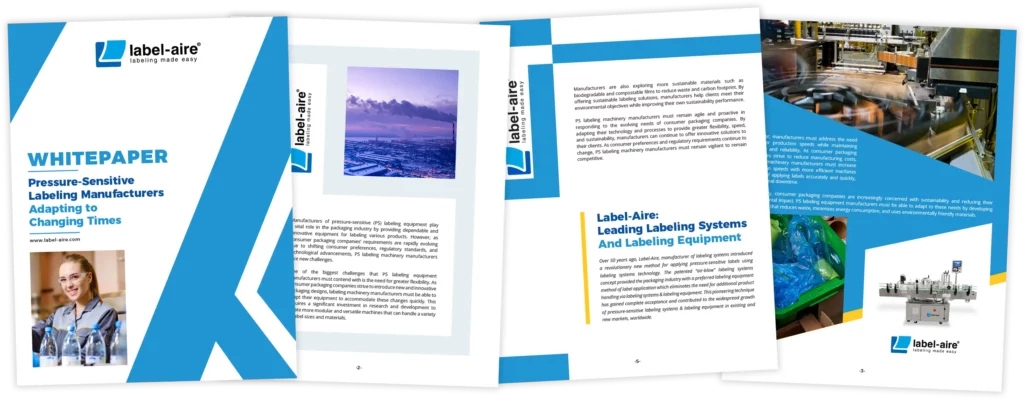[vc_column width=”1/2″](Originally featured in Packagingdigest.com, PMMI Show Daily, November 2004.)
Retailer demand is clearly driving RFID technology making it THE hot topic on the show floor. There is hardly an aisle to be found without reference to it.
The rollout today of a partnership between Omron (Booth S1430) and Domino (Booth S1578 and in the RFID Pavilion Booth E9539) and their jointly developed system takes that technology out of the realm of just meeting the Wal-Mart mandate for tags on each case of product delivered. In addition, The Product Traceability System offers combinations of printed bar codes and passive RFID tags that may be placed in different positions on the case, code verification and track-and-trace and production management solutions, say the global duo. The configurations will be tailor-made.
In both Domino booths, the company is running the compact, one- metre-long system with a short infeed and outfeed. Visitors can see an Omron sensor detecting the incoming case, an Omron read/write device for the RFID tag and its application by noncontact equipment from Label-Aire. The air-blown technique ensures gentle handling of the tag (a flat surface is assured if the tag is to be printed, unlike contact application, which may produce a ridge on the tag that is potentially damaging to the ink-jet printhead). Bad tags are rejected. At the same time as the tag is written, the system also writes to the Domino ink-jet equipment that prints the code and human-readable data on both sides of the shipping case to high resolution.
Scanners validate all of the codes. “So any case is 100-percent-traceable and all the codes are good,” says Simon King, outer case coding Director with Domino Printing Sciences.
The Omron booth takes things a stage further. Here, a Domino laser system is placing a date lot code on cardstock, which also has an RFID tag. Omron is demonstrating all of the different track-and-trace possibilities, as well as how to take the information from the RFID tag and turn that into physical information on the same label. The bar code is verified and the information displayed on an overhead screen. From December, trial amounts of passive RFID tags will be available, going into full production by Omron at its Kyoto, Japan, plant by February, 2005.
Just why is the partnership offering separate tags and coding where others print the codes on the RFID tag? And why is the bar code still needed? Explains Bill Arnold, partner-business manager with Omron Industrial Automation Division: “The bar code has to be in the prescribed position under the coding standard, but the passive tags can be impacted by proximity to metal and fluids, especially beverages. We are going to determine where the best place is to locate both.
“If all you have is the RFID label, there is still a desire to have a line of sight–human-recognizable markings and numbers. It is new technology to the warehouse worker–indeed, some RFID tags won’t be used at the other end. This solution provides a transitional phase. The customer wants a comfort zone. We are going to take his worries away from him.” He stresses that systems aim to offer “true payback, irrespective of the application,” and not an oncost for RFID.
Global and market reach and technology should make the Domino/ Omron partnership attractive to their customers as well as the shareholders. Arnold told the Eye: “We are concentrating on improving quality and production for the food and beverage sector. The way we are doing that is in high end sensing and tracking: we have vision sensors, bar code readers and RFID. We were talking with Domino when we saw the requirements for the outer case for RFID. But that doesn’t make the outer case coding requirement go away. We realised the synergy between both our customers–the technology came as a good by-product.” Adds King: “Apart from their factory automation and data capture expertise, it is Omron’s pedigree in RFID that makes them the right partner. We are a global coding and marking company.” Things have changed radically in that sector. “If you wind the clock back a decade, we were supplying stand alone coding at the end of the line. Now we integrate with full production control systems.
“An important point is that we do not view RFID as others do–it is another way of having a smart sensor out there. We don’t know where some of these things will go, but I do know that RFID will start a supply chain and manufacturing revolution,” predicts Arnold.
He sees a bright future for the partnership. “It will be a challenge for both of us to keep up with the opportunities. We’re being selective with who we will work with. We want to work with those companies who share our vision. That’s more than meeting the mandate.”
Beta sites are already in place in both Europe and North America at food and beverage businesses, the Eye is told.
For more information on our 3115/14 RFID Tamp-Blow Primary Applicator (shown in picture above) or our other RFID products, please call us at (714) 441-0700 or fill out our Info Request form.[/vc_column]



